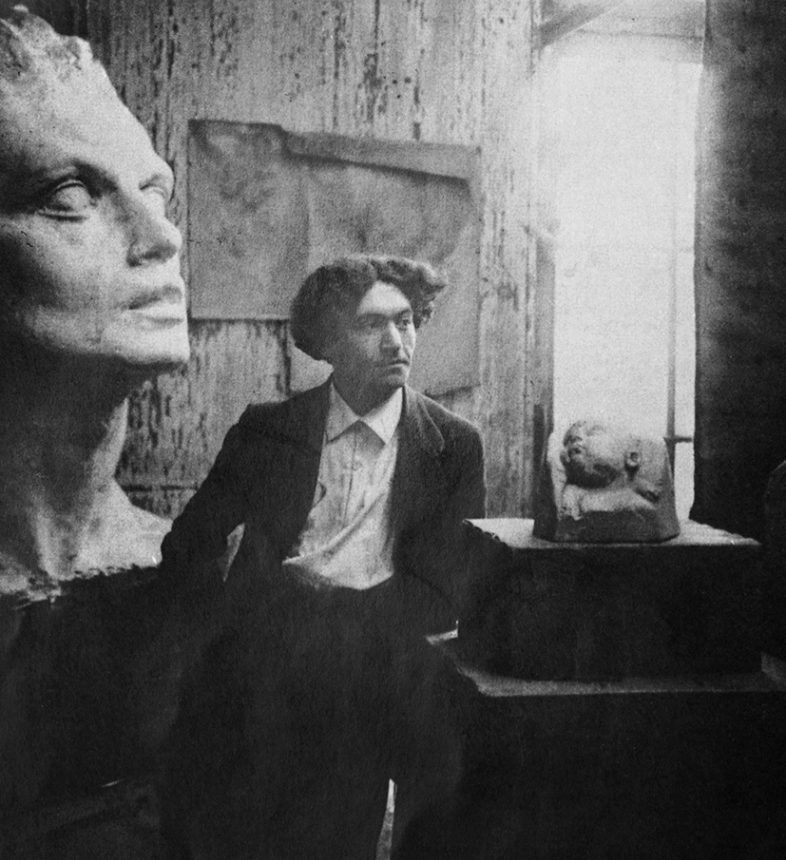Samuel LIPSCHITZ
January 5, 2019Sarah LIPSKA
January 5, 2019Morice LIPSI (born Moryce Lipszyc)
LODZ (POLAND) 1898 – ZURICH (SWITZERLAND) 1986
Morice Lipsi was born into a traditional family. In 1912, he arrived in Paris and settled at La Ruche, where his brother Samuel was already living. Samuel Lipschitz, who was an ivory sculptor, taught him the various techniques and materials used in sculpture. He exhibited his works at official exhibitions in Paris from 1921. In 1922, his first solo exhibition was held at the Galerie Hebrard in Paris.
In 1929, Moryce Lipszyc adopted the name Morice Lipsi to distinguish himself from his brother and Jacques Lipchitz, who had moved to La Ruche five years before him. In 1930, he married the Swiss artist Hildegard Weber and moved to a farm south of Paris. In the 1930s, Morice Lipsi worked alone, far from the artistic schools and movements of his time. He acquired French nationality in 1933. In 1937, his work was presented at the World Fair.
In 1940, Lipsi took part in the wartime exodus and found refuge in Abzac, in the Charente region, where he continued to work with the help of the town council. He later escaped to Geneva, where he spent time with his friend Alberto Giacometti. He returned to Paris after the war. His brother Samuel was deported to Auschwitz and murdered by the Nazis. From the 1960s, Lipsi was the president of the sculpture department at the Salon des Réalités Nouvelles. In the 1960s and 70s, he was commissioned to produce numerous monumental statues in France, Germany, Italy, Czechoslovakia, Israel, Iceland, and Japan. He died in 1986 near Zurich. Many of his works are today exhibited at the Morice Lipsi Museum in Rosey, in the Haute-Saône department.
Stories of Jewish Artists of the School of Paris 1905-1939
FRENCH-ENGLISH
Capitale des arts, le Paris des années 1905-1939 attire les artistes du monde entier. De cette période de foisonnement, un terme est resté, celui d'Ecole de Paris, qui recouvre une grande diversité d'expression artistique. Dans ce brassage dont Montparnasse est le creuset, un groupe se distingue : celui des artistes juifs venus de Russie, de Pologne et d'Europe centrale. Si leurs styles sont variés, un destin commun les rassemble : ils fuient l'antisémitisme de leur pays d'origine. Certains ont connu la célébrité dès les années 1920, tels Soutine, Lipchitz ou Chagall. D'autres n'ont pas eu le temps ou la chance d'y accéder. Près de la moitié a péri dans les camps de concentration nazis.
From 1905 to 1939, Paris attracted artists from all over the globe as the capital of the art world. This period of artistic proliferation became known as the School of Paris, and includes a great diversity of artistic expression. Within the teeming art world centred on Montparnasse, one group set itself apart: Jewish artists from Russia, Poland, and Central Europe. Although their styles were diverse, they shared the common fate of fleeing anti-Semitic persecutions in their home countries. Some became famous in the 1920s, such as Soutine, Lipchitz, and Chagall, while others did not have the time or the luck to gain renown. Nearly half of these artists died in Nazi concentration camps.





